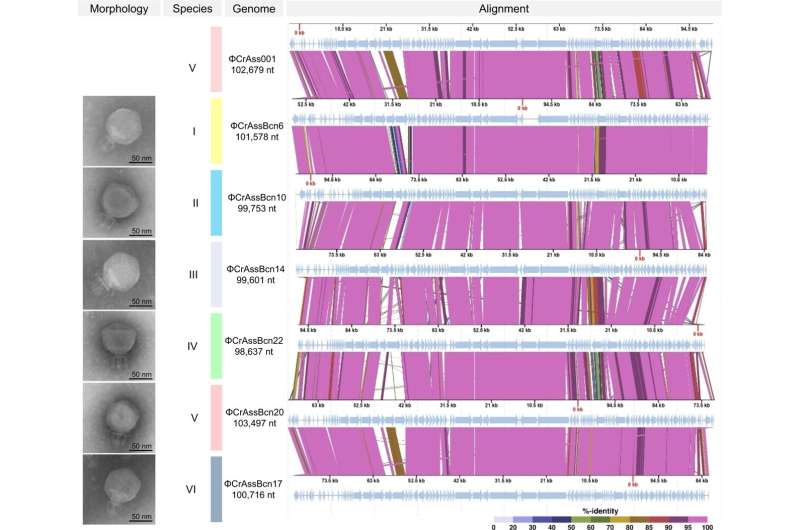This article has been reviewed according to Science X's editorial process and policies. Editors have highlighted the following attributes while ensuring the content's credibility:
fact-checked
peer-reviewed publication
trusted source
proofread
Research team identifies 25 new viruses in Barcelona's wastewaters

A team from the University of Barcelona has identified 25 new viruses that infect bacteria in the human intestinal tract in wastewaters around the city's metropolitan area and in some towns nearby.
These viruses, of the Crassvirales order, infect some species of the Bacteroides genus, which are very abundant in the intestinal microbiota of humans. The viruses now isolated have a completely different genome to any other crAss virus described to date in the scientific literature and have been named crAssBcn phages.
The findings, published in Nature Communications, were carried out by a team led by Professor Maite Muniesa, from the Research Group on Microbiology of Waters related to the Health (MARS) of the UB's Faculty of Biology.
Due to their characteristics, the new viruses are seen as potential indicators of fecal contamination in humans. In addition, the group wants to focus on studying whether the presence and the abundance of crAss phages—specifically crAssBcn phages—is different between healthy individuals and people affected by certain diseases (intestinal, metabolic or even nervous system).
"As far as we know, crAssBcn phages are very specific to the human microbiota and so far, we have not found them in the microbiota of other animals," notes Maite Muniesa, lecturer at the Microbiology section of the UB's Department of Genetics, Microbiology and Statistics.
"Their biological role is still unknown, but being such abundant phages that infect a bacterial genus (Bacteroides) also abundant in the human intestine, it is suspected that they may have a regulatory role in bacterial populations and some influence on the human intestinal microbiota."
Since 2014, only four groups had been able to isolate a total of seven crAssphage-like viruses. Now, the UB team has identified 25 new phages at once, significantly expanding the global map of this group of viruses that are highly prevalent in the world population. Moreover, crAssBcn, despite being native to the Barcelona area, are widely distributed and have been detected in 51% of intestinal metagenomes worldwide.
More information: María Dolores Ramos-Barbero et al, Characterization of crAss-like phage isolates highlights Crassvirales genetic heterogeneity and worldwide distribution, Nature Communications (2023). DOI: 10.1038/s41467-023-40098-z
Journal information: Nature Communications
Provided by University of Barcelona




















